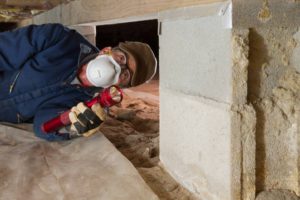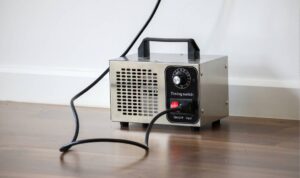Bed bugs are parasitic insects that feed on human blood. These pests are small and reddish-brown and typically come out at night to feed while we sleep. Bed bugs are attracted to the heat and carbon dioxide that our bodies emit, and they can often be found in bedding, furniture, and other areas where people sleep or rest. If you suspect a bed bug infestation, it’s important to take action immediately to prevent the problem from worsening.
What Do Bed Bug Bites Look Like?
Bed bug bites can be difficult to identify because they often look like other insect bites, such as mosquito or flea bites. However, a few key characteristics can help you determine whether you’re dealing with bed bugs.
Bed bug bites typically appear in clusters of 2-3 bites. The bites are small and red and may be slightly raised or swollen. Sometimes, bed bug bites may also appear in a straight line or zigzag pattern, as the bugs feed linearly.
Unlike flea bites, which can appear anywhere on the body, bed bug bites are most commonly found on exposed skin, such as the arms, legs, and face. If you’re getting bitten every night, you likely have a bed bug infestation that needs to be dealt with immediately.
It’s also important to note that not everyone reacts to bed bug bites similarly. Some people may develop a severe allergic reaction to the bites, while others may not experience any symptoms at all. If you’re not sure whether you have bed bug bites, it’s recommended that you consult a doctor to rule out other possible causes.

How Do Bed Bugs Feed?
Bed bugs are nocturnal insects that typically come out at night to feed on human blood. They are attracted to the heat and carbon dioxide that our bodies emit, which is how they know when to come out and feed.
When a bed bug bites, it injects a small amount of saliva into the skin. This saliva contains an anticoagulant that helps the bug feed more easily and a numbing agent that can make the bite painless. Most people don’t even realize they’ve been bitten until they wake up with itchy bumps on their skin.
After feeding, bed bugs will typically retreat to their hiding places, which can be anywhere from cracks and crevices in walls and floors to the seams of mattresses and upholstered furniture. Bed bugs can go for long periods without feeding, but they will come out to feed every few days when a food source is available.
How Do You Know If You Have a Bed Bug Infestation?
If you’re getting bitten every night, there’s a good chance that you have a bed bug problem in your home. However, a few other signs to look out for can help you confirm the problem.
One of the most obvious signs of a bed bug infestation is the presence of live bugs. Bed bugs are small and reddish-brown, and they can often be found hiding in cracks and crevices in walls and floors and in bedding, furniture, and other areas where people sleep or rest.
Another sign of a bed bug infestation is the presence of bed bug feces. Bed bug feces are small and dark in color, and they may appear as tiny dots or smears on bedding or furniture. You may also notice shed bed bug skins, which are translucent and may be found in areas where bed bugs are hiding.
If you suspect a bed bug infestation, it’s important to take action immediately to prevent the problem from worsening. Bed bugs can multiply quickly, and a small infestation can become a major problem in just a few weeks.

How to Get Rid of Bed Bugs
Getting rid of bed bugs can be difficult and time-consuming, but it’s important to take action as soon as possible to prevent the problem from worsening. Here are a few steps you can take to get rid of bed bugs for good:
- Identify the source of the infestation. The first step in getting rid of bed bugs is identifying their origin. Check your bedding, furniture, and other areas where people sleep or rest for signs of bed bugs.
- Clean and declutter. Bed bugs can hide in cluttered areas, so cleaning and decluttering your home as much as possible is important. Vacuum your floors and furniture, and wash your bedding and clothing in hot water.
- Use bed bug sprays and powders. There are a variety of bed bug sprays and powders on the market that can help kill bed bugs. However, it’s really important to read the label carefully and follow the instructions.
- Hire a professional exterminator. If you’re dealing with a large or persistent infestation, calling in a professional exterminator is a good idea. A qualified and experienced exterminator can help identify the source of the infestation and develop a comprehensive plan to eliminate the problem.
Preventing Bed Bug Bites
While it’s not always possible to prevent bed bug bites, you can take a few steps to reduce your risk of getting bitten. Here are a few tips:
- Use bed bug-proof encasements on your mattress and box spring.
- Keep your home clean and free of clutter.
- Inspect secondhand furniture and clothing for signs of bed bugs before bringing them into your home.
- Regularly inspect your home for signs of bed bugs.
- Use bed bug sprays and powders to prevent infestations.
- Hire a professional exterminator to regularly inspect your home for bed bugs.

Conclusion
Bed bugs can be a nuisance, but with the right knowledge and tools, you can eliminate them for good. If you suspect a bed bug infestation, it’s important to take action immediately to prevent the problem from worsening. Following the tips and strategies outlined in this guide, you can protect yourself and your family from bed bug bites and ensure a good night’s sleep.




